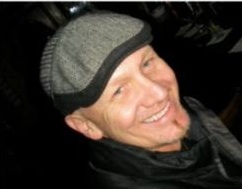This semester my class is partnering with organizations in Syracuse, NY, as well as with schools in the Middle East/North Africa. Our goal is to foster a discussion on the meaning of human rights, religious freedom, and democracy. Much of this work is taking place in the context of our Middle Eastern student partners being confronted by ISIS on a daily basis. To prepare for these dialogues, my students have been reading, discussing, and considering the history of the region and its political contours. Indeed, this past week, we were just on the cusp of beginning our conversations.
Then one of our Middle Eastern partners vanished.
A scheduled Skype call with my class never materialized. We still have not heard from him. My students feared the worse might have occurred. My sense was less ominous. For the moment, I am thinking that the absence is one of the typical partner issues any project faces. “Time will tell” if I’m being naïve. Still, in the immediate moment, I had to figure out how to move the class forward. It was at this moment that I realized the value of having multiple partners in any community project.
Often, when forming community partnership projects, teachers are advised to keep it simple – work with only one partner. When that partner is unable to keep their commitments, however, the project will often falter, if not actually fail. By itself, this possibility is an argument for creating projects with multiple partners.
Yet the more important reason against the strategy of the “single partner” is that it misrepresents the ways change occurs in a community. Change is a collaborative coalitional project. To create change within a community is to work within a space where a network of committed organizations share resources toward a common goal, constantly amending plans as organizations encounter difficulties fulfilling their promises. Change is an alliance in constant flux. If our goal is to show how change occurs then our community-based classroom projects need to demonstrate this fact for our students.
Here are some guiding principles:
1. Your Classroom Should Exist Within a Coalition
When designing a community-based project for my students, I try to think of all the different actors who have a stake in a particular issue. Out of that set of organizations and individuals, I then consider with whom I have an existing partnership and an ongoing effort on a particular issue. Once I have a set of partners willing to join their existing efforts to the possibilities of my class, we develop a plan to distribute required work. (For advice on how to develop “work plans,” see Writing Communities, p. 233.)
2. Each Coalition Member Should Have Unique but Integrated Tasks
The purpose of having multiple partners is to create a set of projects and tasks that are interrelated in that they support a common goal, but are not necessarily dependent on each other. For instance, community projects often find it useful to develop informational sheets on an issue to distribute in a neighborhood; community forums are also considered important, yet one is not dependent on the other. If one partner is unable to follow through on the forum, the other partner’s information sheets can still be produced in alliance with my class. This allows the project (and the class) to keep momentum going despite setbacks.
3. Student Work Should Be Distributed Among Partners
Multiple partners create the possibility of different types of work for students. Rather than just tutoring, for instance, the students might also run workshops with parents about the goals of education; create short videos featuring students reading their work for a local community access station; produce policy papers for use by community organizations focused on school reform. That is, a partnership network allows students to not only experience ways in which collaboration can produce actual change, it also allows them to bring their particular strengths to this collaboration.
4. When One Partner “Vanishes,” Redistribute Work Among Other Partners
If a project exists among many different organizations, when a partner has to drop out (or can’t fulfill its tasks), you can move students to other ongoing projects. This both demonstrates the value of coalitional work when creating change and insures that students have continuous work to do in the class. Such moves are not possible when a class is premised on a single project.
In arguing for our classrooms to be distributed among a network of community partners, I can imagine an argument that this creates more work for the teacher. My experience is that this is just the opposite. Each person’s individual workload shrinks and becomes more focused as collective resources are brought into alliance, and each person can witness greater impact for their efforts when placed within a collective movement. This is a powerful lesson for our students to learn.
As I conclude this post, I continue to hope that soon I will hear from my partner and friend in the Middle East. Yes, partners vanish, but we are all always wishing for their safe return.





